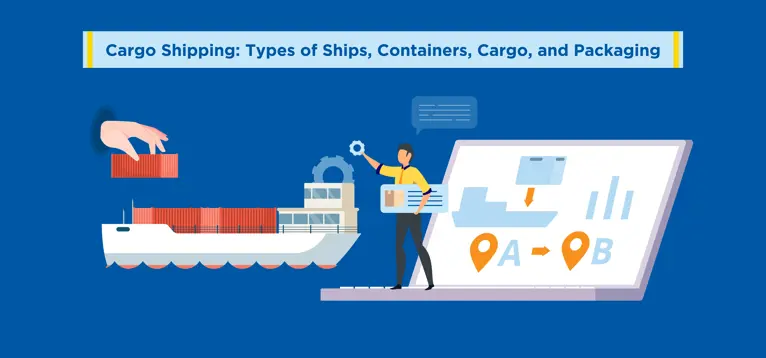If you ship goods in bulk, you’re not new to this term—cargo shipping.
In 2020, about 1.85 billion metric tons of cargo were shipped globally as compared to just 0.1 billion metric tons in 1980. Over the years, the demand for bulk goods transportation has increased significantly due to a constant rise in international trade.
And with continuous advancements in shipping technologies, the freight operations have become much more efficient and safer than ever before. This has opened up an array of opportunities for businesses around the world.
If you want to learn about cargo shipping for your business, this guide will come in handy. We’ll cover:
- What cargo shipping is
- The common types of cargo
- Types of port shipping containers
- Different types of cargo ships
- Best practices for cargo packaging
Let’s start.
What is Cargo Shipping?
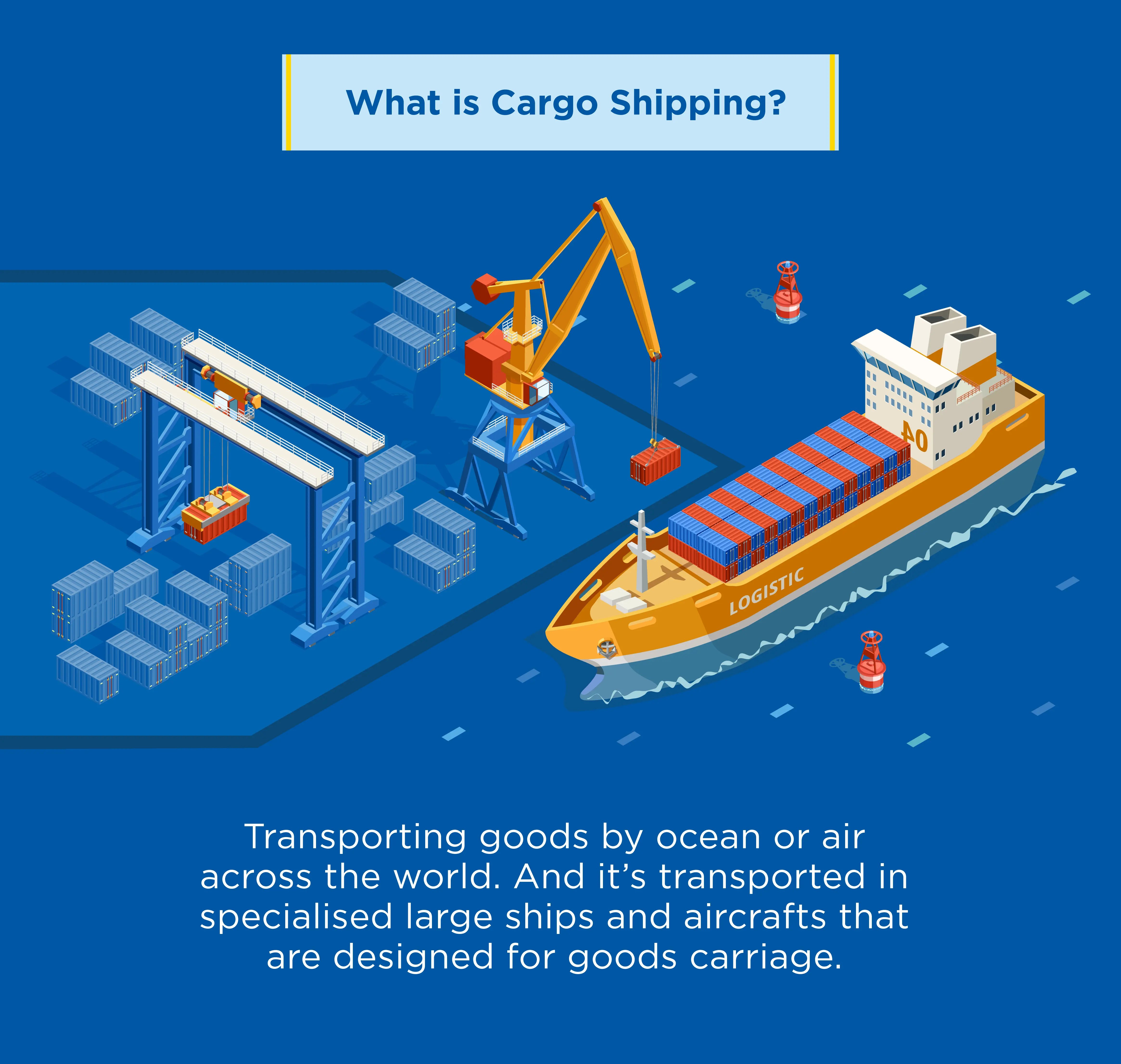
Typically, cargo shipping means transporting goods by ocean or air across the world. And it’s transported in specialised large ships and aircrafts that are designed for goods carriage.
To begin with, the word “cargo” was mainly used for the goods transported through vessels. However, these days cargo shipping is also interchangeably referred to as freight shipping. And with time, it has become synonymous with sea freight—ocean cargo shipping.
Also, note that cargo shipping is primarily used for commercial purposes and requires documents like a bill of lading, air waybill, customs declaration, etc.
6 Most Common Types of Cargo
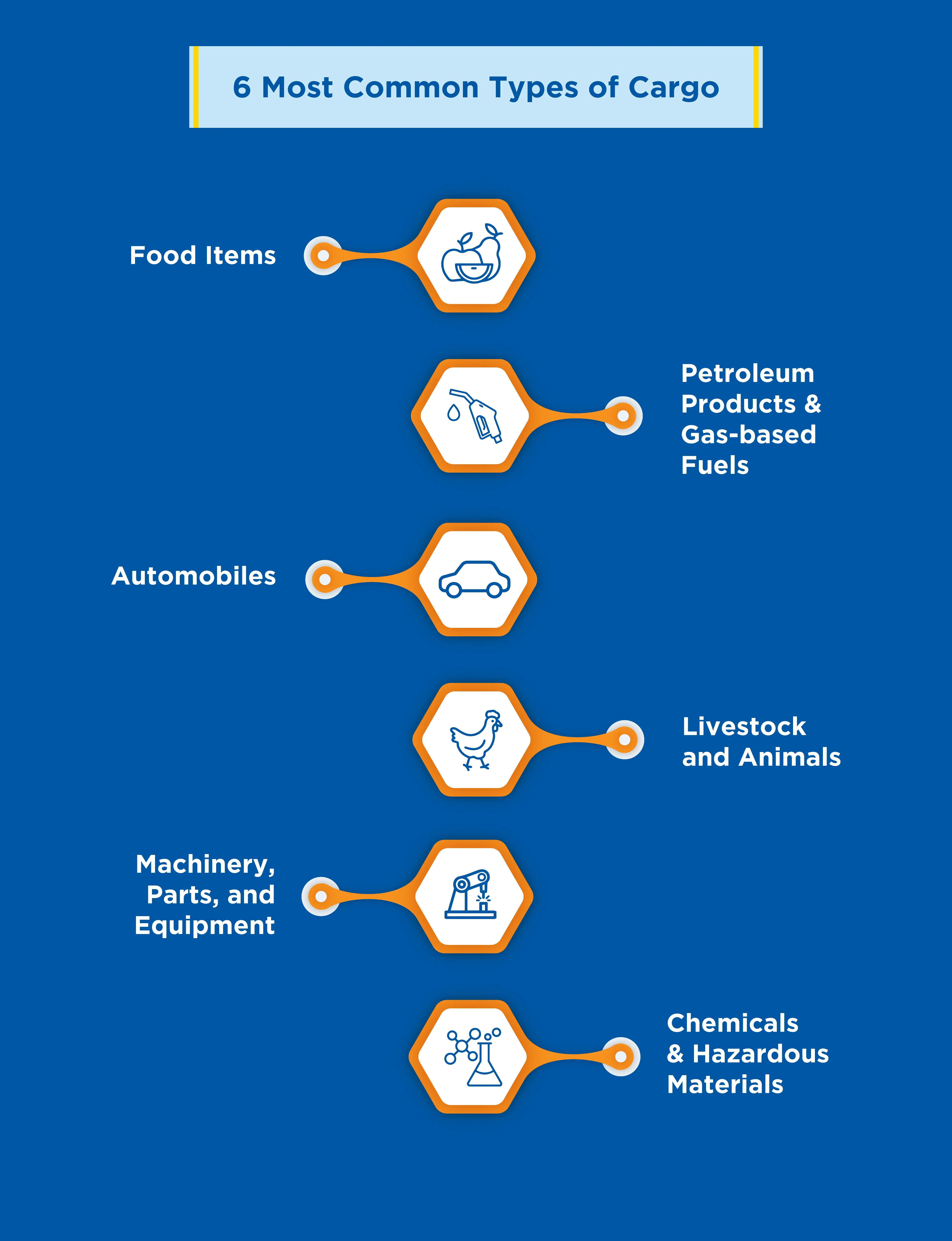
Transporting cargo by ocean is one of the most affordable modes of shipping. Although it takes longer than other transportation methods, you can save huge amounts of shipping costs on bulk freight if your shipments are not urgent.
That said, here are some of the most common types of goods that are being transported through cargo shipping.
Food Items
The commonly transported food items include fresh produce, packaged, processed, non-processed, frozen foods, and many more. Due to their short lifespan and possibility of spoilage, transporting food items is challenging.
While most other types of cargo can stay aboard a vessel for weeks and months, food items are a type of cargo that needs to reach the destination urgently. That’s why the majority of perishable foods are usually transported through air freight.
But air cargo has weight limitations and if you want to transport huge quantities—hundreds or thousands of tons, you’d have to send it in multiple batches.
However, you can still ship bulk food cargo in a single voyage through refrigerated vessels called reefer ships. These vessels can control the temperature at the level that’s required to keep the food items fresh throughout the journey.
Petroleum Products & Gas-based Fuels
Petroleum products and their byproducts constitute a major share (in terms of volume and revenue) in cargo shipping. These products include crude oil, petroleum, LPG, PNG, CNG, and other types of fuels.
Since ocean freight is the most cost-effective transportation mode to transport bulk goods, it’s the preferred method to ship these energy products. This helps petroleum companies and authorities curb fuel prices.
Petroleum products, fuels, and gasses have to be transported in specialised vessels like gas tankers or oil tankers.
Automobiles
Since automobile products like cars, trucks, and other vehicles are heavy & bulky, it’s convenient to transport them through ocean cargo shipping. That’s why it’s no surprise that most automobile companies move their goods through sea freight.
Besides the new vehicles, bulk trading the old vehicles across different parts of the world has also gained momentum. Especially in regions like Europe, Middle East, Australasia, and Americas.
Livestock and Animals
Cattles like sheep, goats, cows, and other animals are usually transported across different countries. Cargo ships are the main mode of transport to carry out these import-export operations.
Keeping the animals welfare in mind, these types of carriage require prior approvals from the authorities.
At the same time, the shippers must have specialised carriers and licences to transport animals to conduct these operations.
These are the two types of vessels to transport animals.
- Open livestock carrier vessels: This type of vessel has the animal cages and storage facility on the deck side of the ship. This allows more breathing space for the animals but they are also exposed to the winds. Hence, it may not be suitable for all weather conditions.
- Mechanical livestock carrier vessels: These mechanised closed pens are located below the deck. Shipping companies ensure these pens are adequately ventilated and temperature controlled to keep the animals safe during the journey.
Machinery, Parts, and Equipment
Machinery and parts are relatively easy to ship as they don’t have specific shipping requirements. Besides, they’re not vulnerable to issues like damages due to sea motion, spillage, spoilage, volatility, etc.
Thanks to all these reasons, sea cargo shipping is the most affordable, viable, and preferred choice of transport for such goods.
The only challenge with this cargo type is that metal can easily start rusting if it’s exposed to water or moisture in the ship's compartments. To counter this problem, most generic bulk carriers are equipped with drying units to monitor the humidity in the air within the cargo ships.
Besides, carriers also use drying agents (composed of calcium) to keep the storage compartments dry.
Chemicals & Hazardous Materials
The industrial chemicals and hazardous materials are required in multiple industries and have to be transported globally.
Transportation of these chemicals and substances is yet another challenge for the cargo shipping industry. They can cause corrosion to the containers and ships. Besides, there are possibilities of accidental poisoning, leakage, and contamination.
If not handled properly, these goods can pose a threat to the ship, crew members, and freight handlers. Hence, they must be transported in chemical tankers or specialised containers for toxic substances.
Types of Shipping Containers
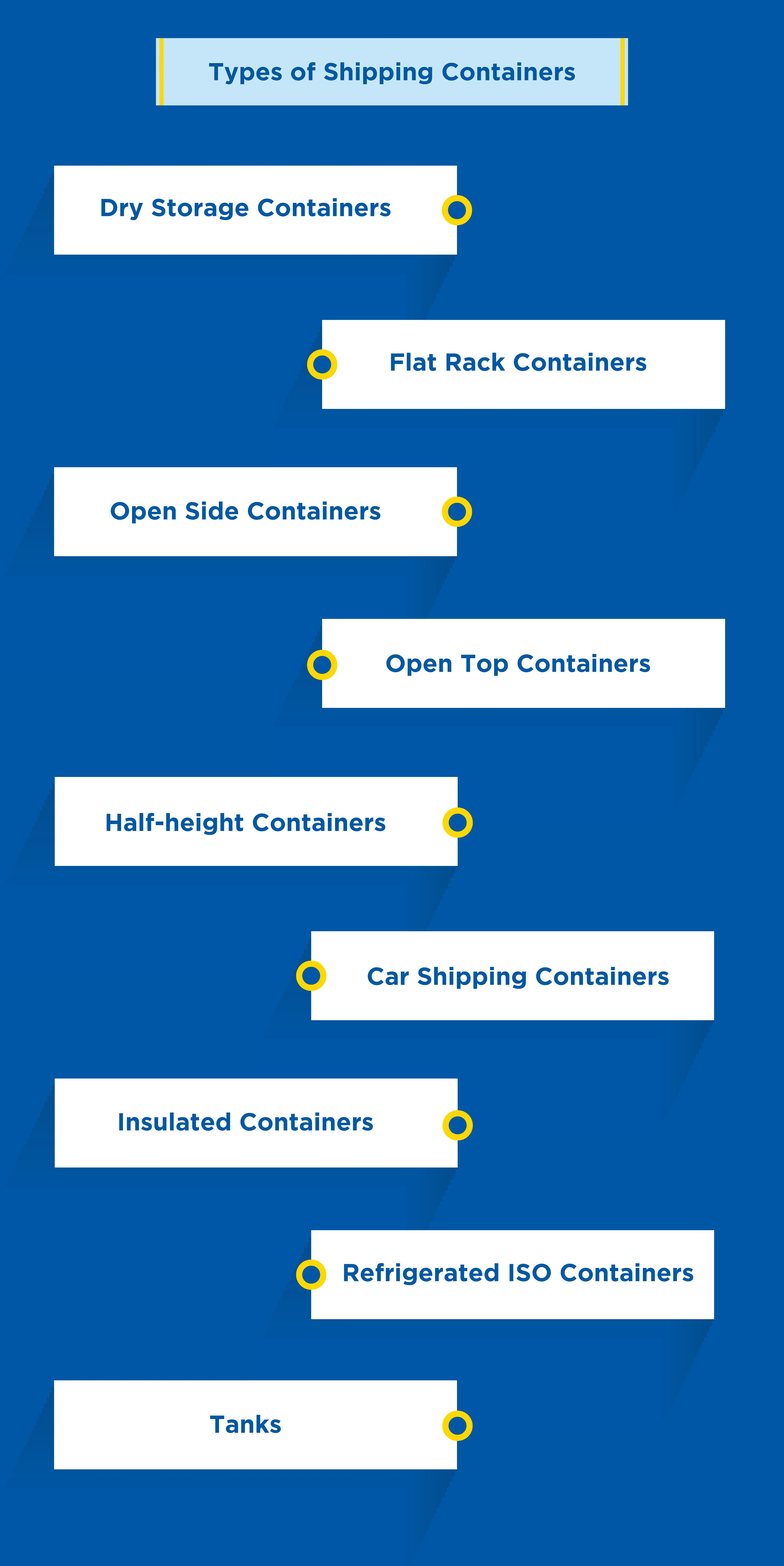
According to a report by Research and Markets, the global shipping container market is likely to grow from $10.09 billion in 2022 to $13.48 billion by 2026—at CAGR 7.5%.
When you ship bulk cargo, stakes are high and you want your goods to reach their destination in pristine condition. That’s where shipping containers play an important role. They protect your goods from many adversities that may take place in long journeys.
The factors you should consider while deciding the type of container to use are:
- The type/nature of cargo e.g. liquid, solid, etc.
- The weight and size of cargo
- Type of equipment required to load or unload the goods (crane, spreader, forklift, etc.)
- Similarity or variations of goods, etc.
With that, let’s look at some of the popular shipping container types.
Dry Storage Containers
As the name suggests, Dry storage containers (also known as standard containers) are built mainly to carry dry goods. They are the most commonly used container type in the shipping industry.
Dry storage containers usually measure 10, 20, and 40 feet in length and have lockable doors on one end.
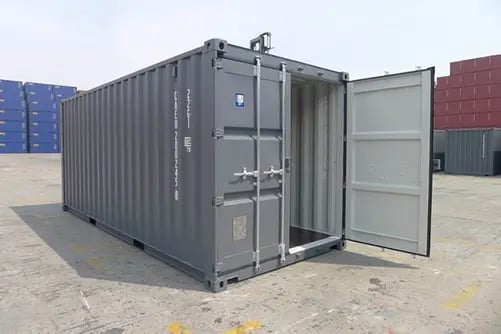
Dry storage containers do not have the capability to control the inside temperature. So if you want to ship food items or goods that require refrigeration, these containers don’t serve the purpose.
You’d need to use a Container Spreader to handle these containers while loading and unloading cargo.
Flat Rack Containers
A flat rack container doesn’t have side-walls and a roof. So technically, there are only two walls at both ends that allow you to load and unload the cargo from the top and/or sides. You can use these containers to transport goods that can’t fit inside a standard container.
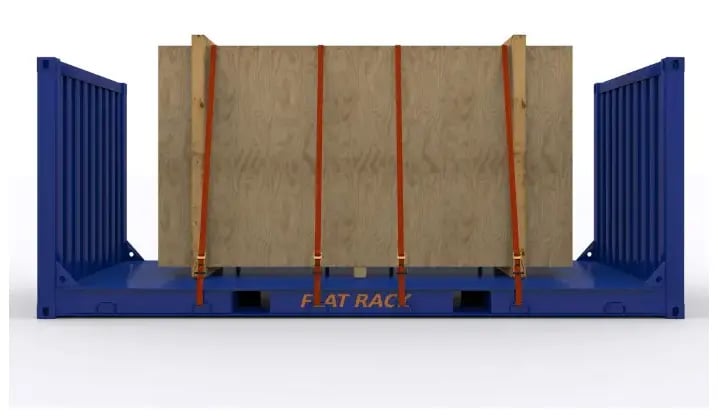
Some flat rack containers also come with collapsible side-walls so that you can attach or remove them as required. Typically, flat rack containers measure 20 or 40 feet in length. And they’re built from solid steel for greater strength and durability.
Open Side Containers
An open sided shipping container has additional bi-fold doors on the sidewall. The rest of the features remain the same in open-sided and standard ship containers.
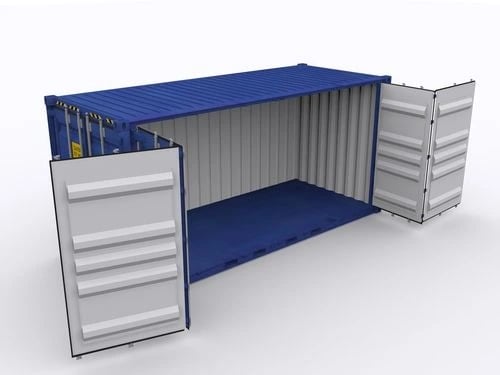
This type of container is quite useful when you want to ship wide merchandise that can be difficult to load in a standard container with a door at the end of the tunnel.
The extra doors on the side, once opened, makes it easy to load and unload oversized shipments.
Open Top Containers
Open top containers are the same as dry storage containers, but without the hard top. They usually have a convertible plastic roof that can be removed while loading and unloading. This roof protects the cargo from rain and other weather conditions.
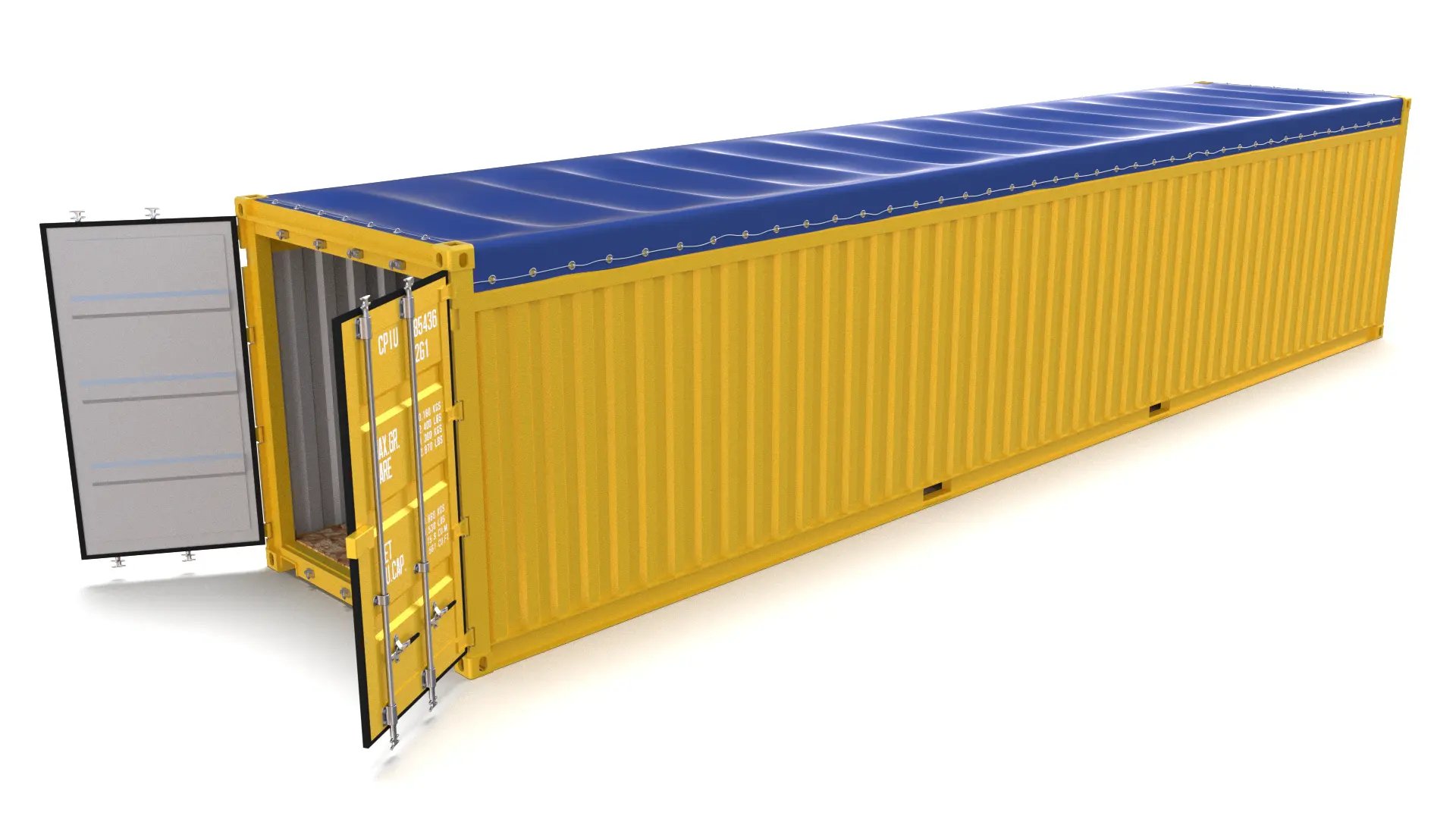
When you’re shipping bulk cargo, you can load and unload it easily from top with the help of Overheight Frames.
Half-height Containers
These containers are half the height of standard freight containers. Rest of the features in half-height containers are the same as standard transporting containers.
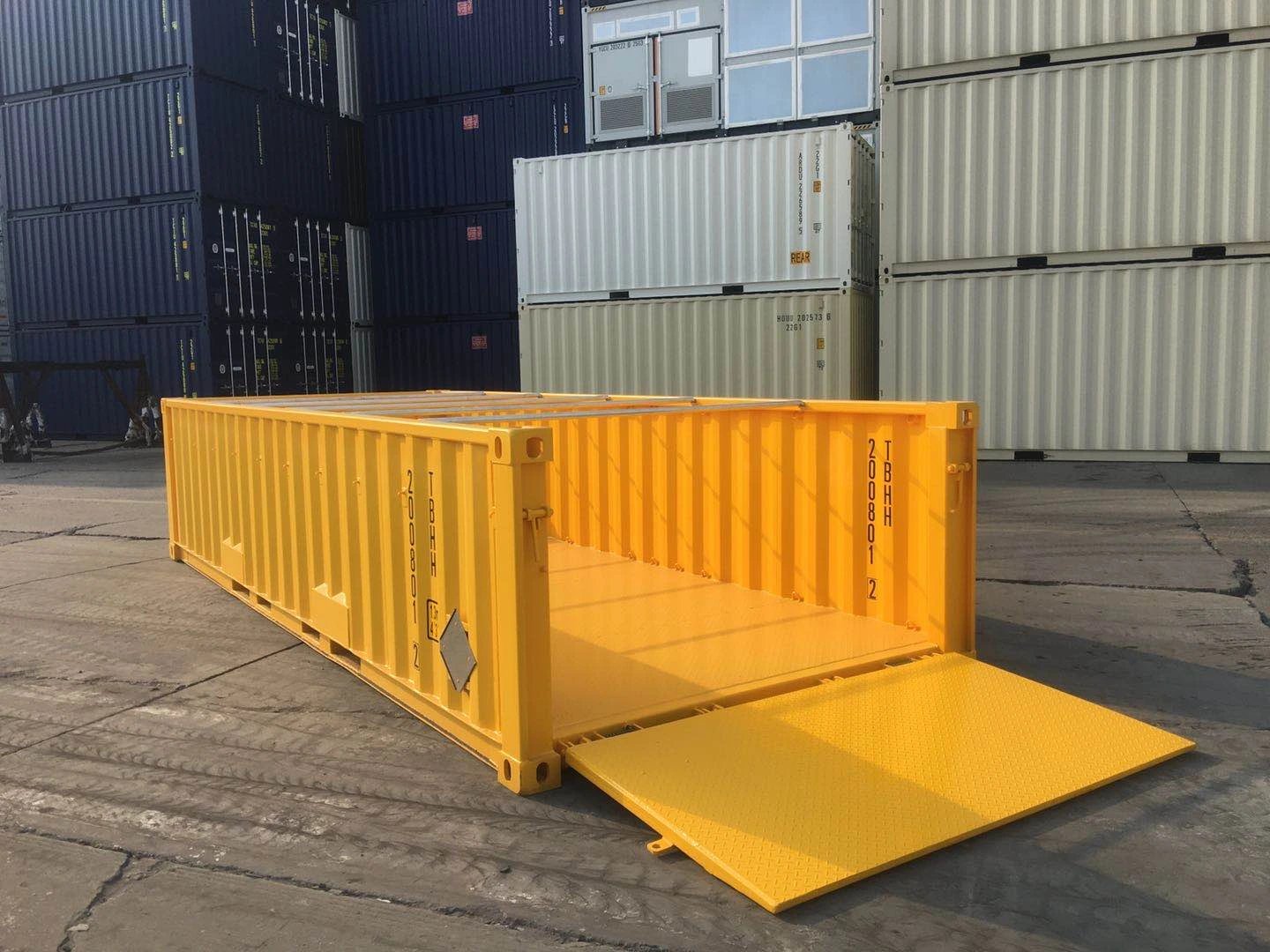
Half-height containers are primarily used for transporting goods like coals, stones, etc. Due to the low height of the container, it becomes easy to load and unload bulk cargo.
Car Shipping Containers
Car shipping containers are specially designed to transport cars over long distances. These containers have an internal racking system that allows you to fit maximum cars safely in the available space.
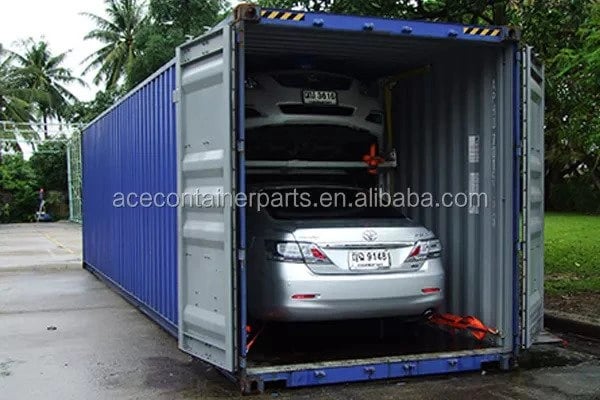
After loading, the cars are secured with safety straps so that they are stable on the racks through the journey.
Normally, these containers are used for road or rail freight. However, with specialised ships like Roll-on Roll-off vessels, they can be transported as sea freight too.
Insulated Containers
Insulated containers—or non-operational refrigerated containers—are used for transporting goods in a temperature-controlled environment. The inner walls of these containers are equipped with thermal insulation which mitigates the impact of outside temperatures.
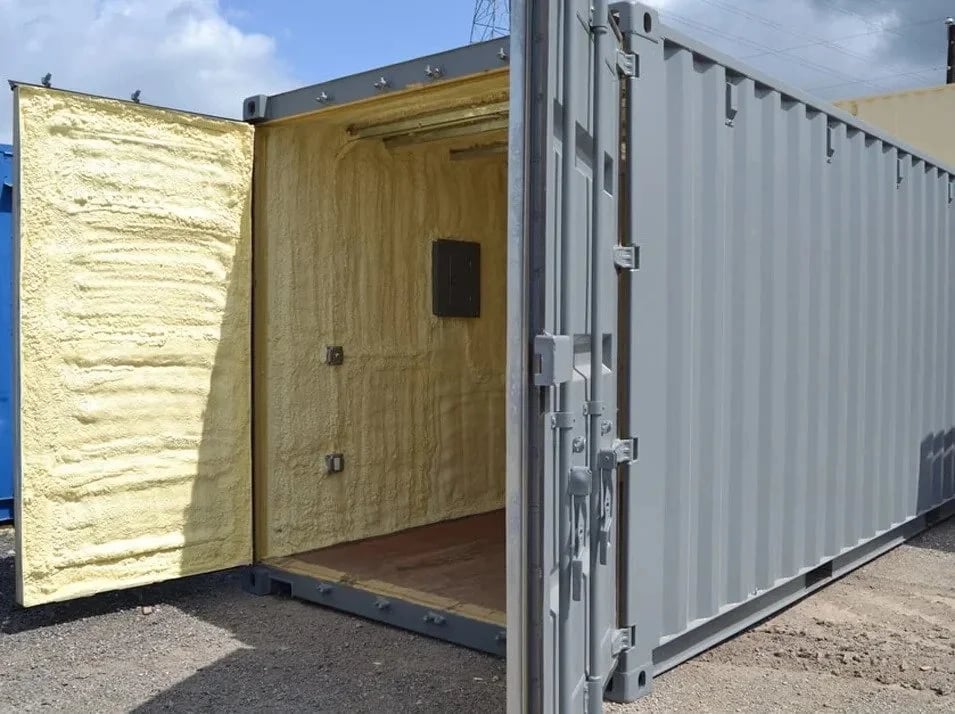
The insulated containers are ideal for storing perishable goods such as grain, feed, etc. that don’t require refrigeration, but decay quickly in warm temperatures.
Refrigerated ISO Containers
Refrigerated ISO containers are temperature-regulated containers that are used in intermodal transport. Although their purpose is to keep the internal temperature low, they can regulate it in ranges between -65 °C to 40 °C.
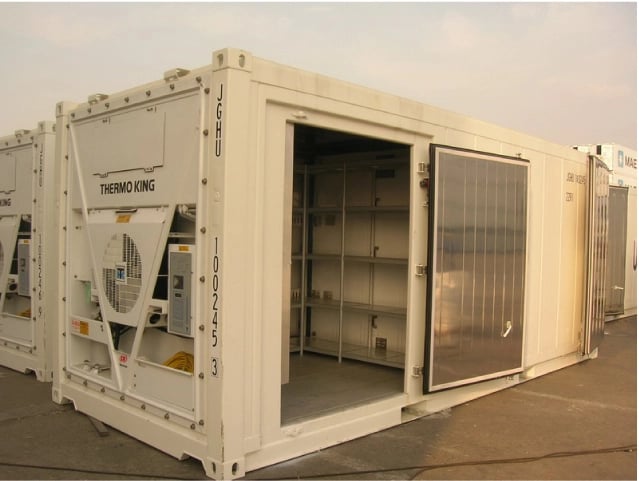
While these containers have an in-built refrigeration system, they have to be powered from external electrical sources—be it on land-side, on a ship, or on quay.
Reefers are most suitable containers for limited shelf-life goods like fresh vegetables, flowers, meat, etc.
Tanks
ISO tanks are the most preferred container type that is used for transporting liquid substances globally. These tanks are built from strong steel and anti-corrosive materials to protect the contents stored inside.
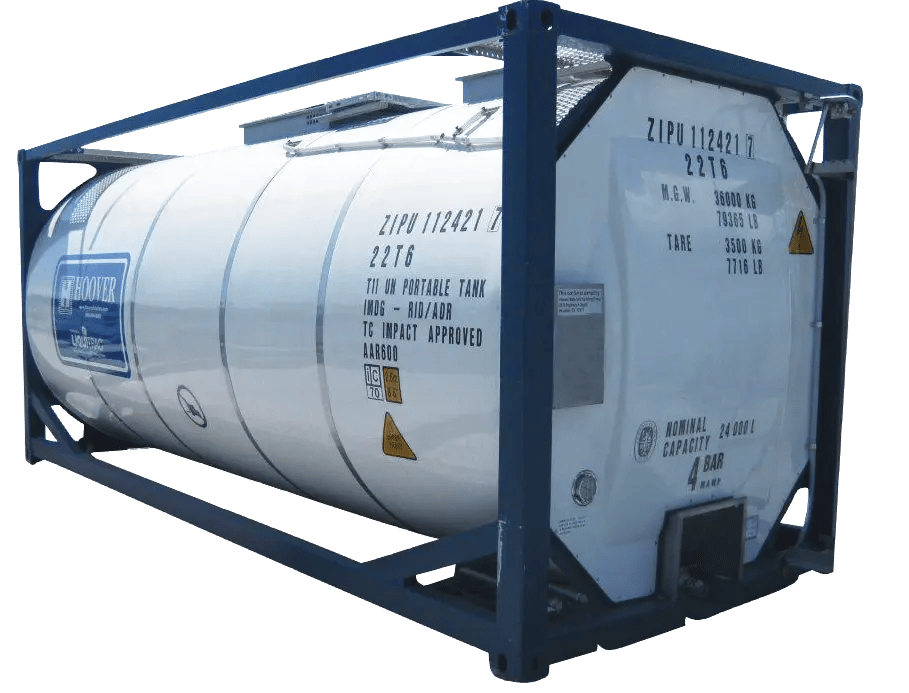
As you can see in the image, these tanks are reinforced with solid metal bars outside to give them stability and for the ease of loading and unloading.
Types of Cargo Ships
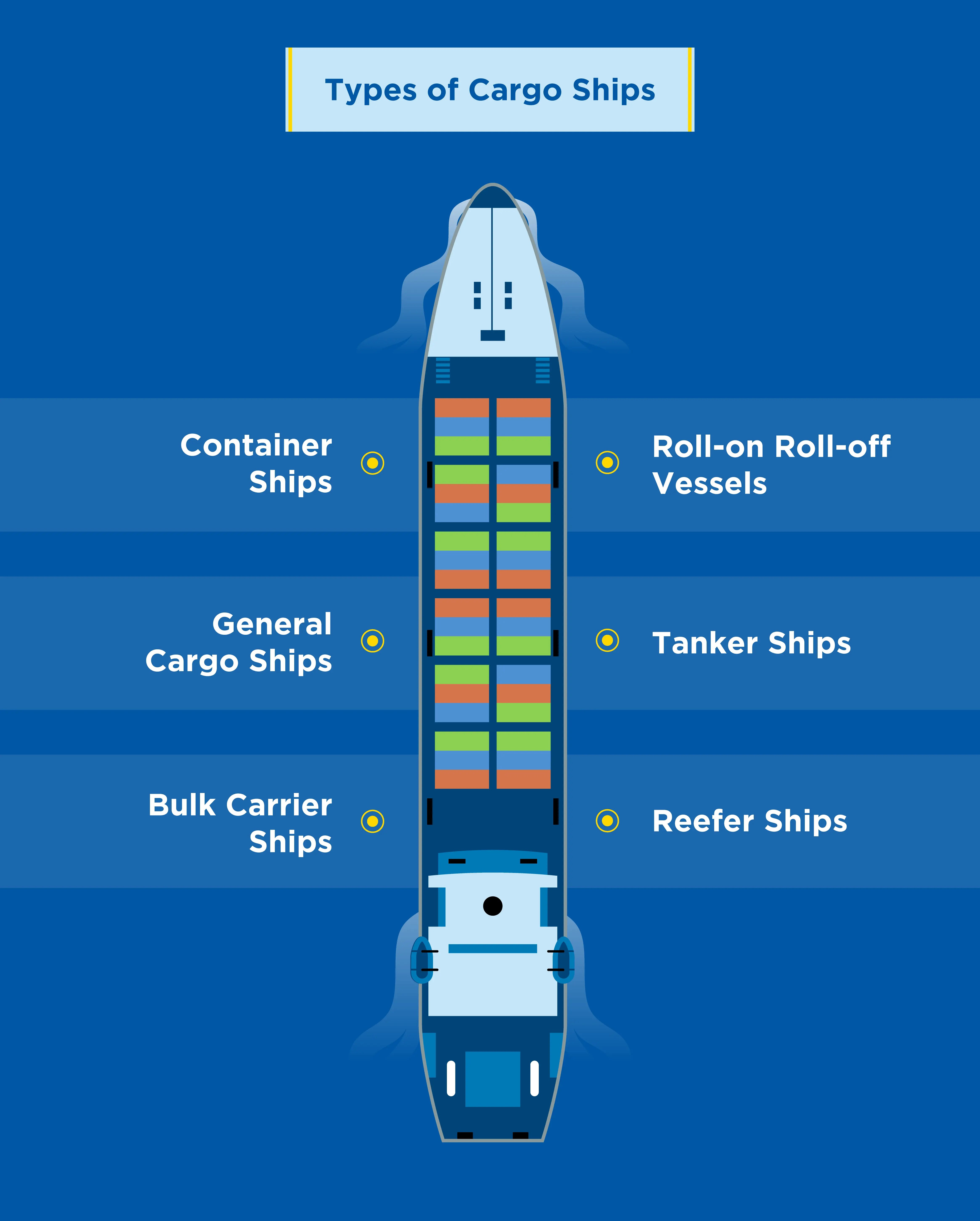
Today, 80% of the goods across the globe are transported by ships.
But ocean cargo shipping comes with its own share of risks due to the unpredictable nature of ocean water and weather conditions. This entails a multitude of challenges and hazards like fire, accidents, spoilage, fungal growth, and many more.
That’s why you need to ensure that your cargo is being transported in a ship that is specifically designed to carry those goods. This helps you optimise the safety of your cargo until it reaches the destination.
Here are the main types of cargo ships that run the ocean freight industry.
Container Ships
Container ships are specifically designed to carry the huge quantities of containers packed with goods. These ships have revolutionised ocean freight shipping by enabling movement of enormous cargo in a single voyage.

This has also made sea freight a more affordable cargo shipping option. That’s why container vessels are widely used for goods transportation through the ocean.
As of 2021, there are a total of 5434 container ships in the world.
These are some of the main types of container ships based on their size:
- Panamax
- Suezmax
- Post-Panamax
- Post-Suezmax
- Post-Malaccamax
General Cargo Ships
General cargo ships are used to carry loose cargo of different types. Here, loose cargo means it’s not containerised. These ships mostly transport break bulk cargo like foods, garments, furniture, machinery, etc.
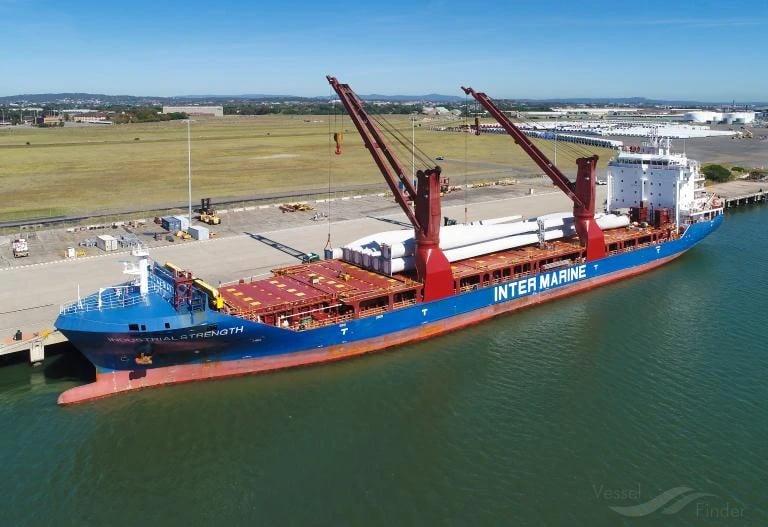
A general cargo ship can have a single or multiple holds for cargo storage. And some of them may also have tween decks.
Also, most of the general cargo ships have their own set of built-in cranes as a part of the vessel which helps in loading and unloading the cargo at ports. Since these ships can carry different types of goods, they’re also known as multi-purpose vessels.
Bulk Carrier Ships
Bulk carriers, as the name suggests, transport cargo in bulk quantities. These vessels are often used for shipping loose or dry bulk cargo like iron ores, grains, cement, coals, etc.
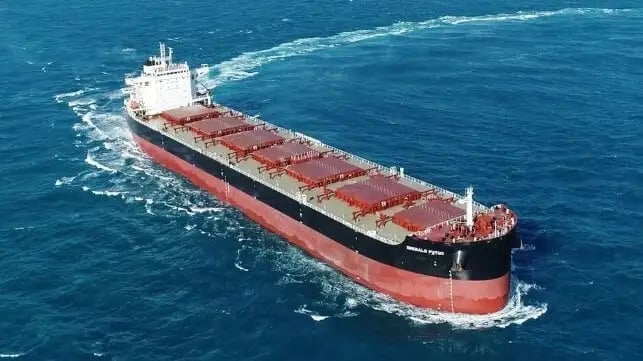
Bulk carriers come in multiple sizes and their capacity to carry weight can go up to 4,00,000 deadweight tonnage. These vessels can further be categorized into the below categories in descending order as per their weight carrying capacity:
- Very Large Carriers
- Capesize & handymax
- Panamax
- Handysize
- Small size
After 2006, the bulk carriers have to be built in compliance with the regulations of Common Structure Rules for Bulk Carriers (CSR-BC) to standardise the quality and safety standards of the ships globally.
Roll-on Roll-off Vessels
Roll-on Roll-off (Ro-Ro) ships are specially developed to transport wheeled cargo like vehicles, and other automobiles. These vessels have integrated ramps on the backside of the ship for loading and unloading vehicles.
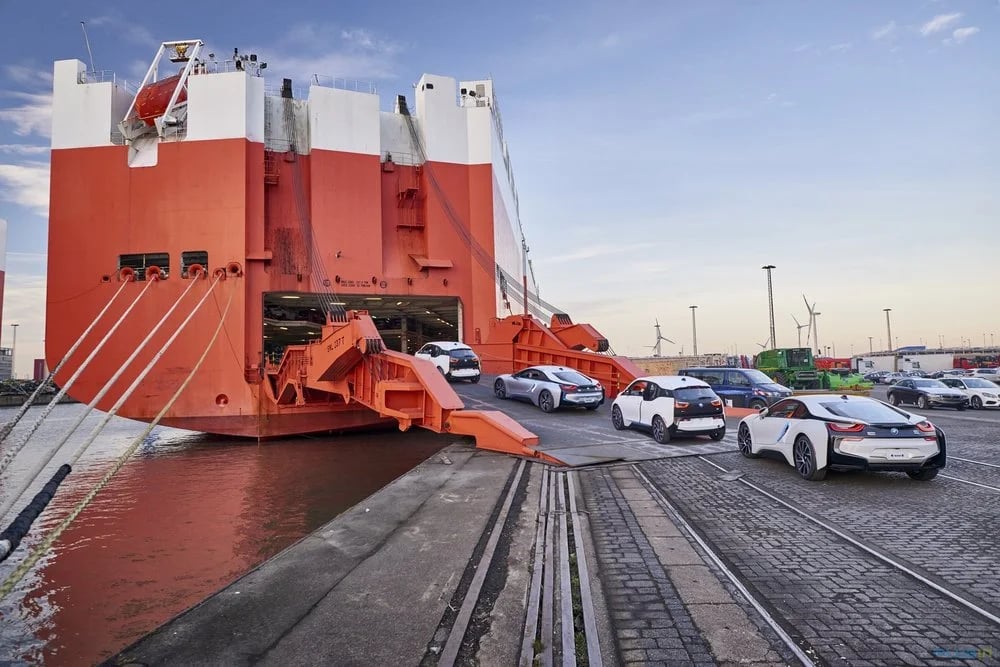
As you can see in the above image, vehicles can simply be driven in & out of the vessel through the ramp.
Ro-Ro ships have evolved along with the technological advancements over the years. Some of the key types of Ro-Ro vessels are:
- Pure Car Carrier (PCC)
- Pure Car and Truck Carrier (PCTC)
- General Cargo + Ro-Ro (GenRo Ships)
- Container Vessel + Ro-Ro (ConRo Ships)
- RoPax Ferries (Allows passengers onboard to load their private vehicles in storage area along with other commercial vehicle cargo)
- Complete Ro-Ro, etc.
Tanker Ships
Tanker ships are used for transporting the bulk quantities of liquid cargo. They’re also known as Liquid Bulk Carriers.
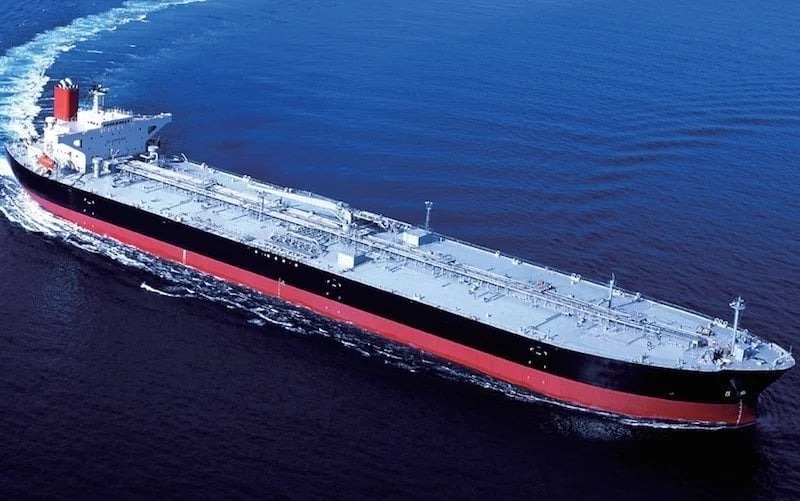
Tanker ships happen to be some of the longest vessels out there. These vessels are equipped with the latest technologies and are available in different types and sizes for different use cases.
Tankers constitute almost 30% of the total merchant ships and by the end of 2021 there were 8883 tanker ships in the world.
The main three categories of tanker ships are:
- Oil tankers: Primarily used to transport crude oil and its byproducts.
- Chemical tankers: Used for carrying chemicals and other liquid substances.
- Gas tankers: Used for carriage of different gasses like LPG, PNG, CNG, etc.
And here’s the classification of tanker ships based on their size and carriage capacity.
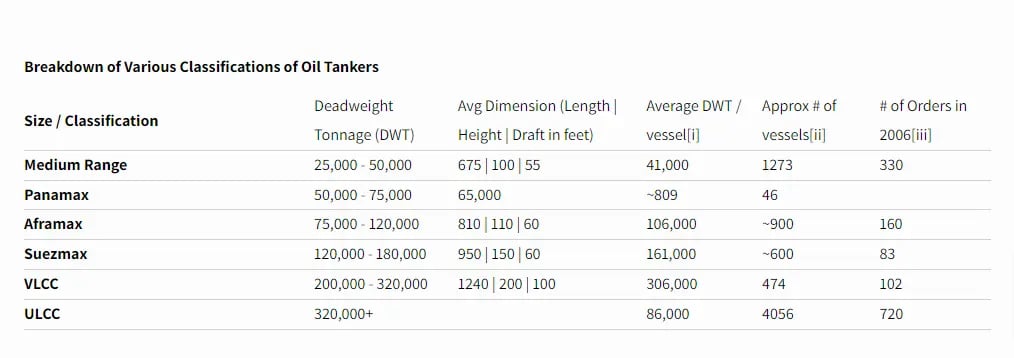
Reefer Ships
Reefer ships are useful for transporting perishable cargo in refrigerated conditions. Reefer ships and refrigerated containers have made it possible to import and export products with limited shelf-life without decaying.
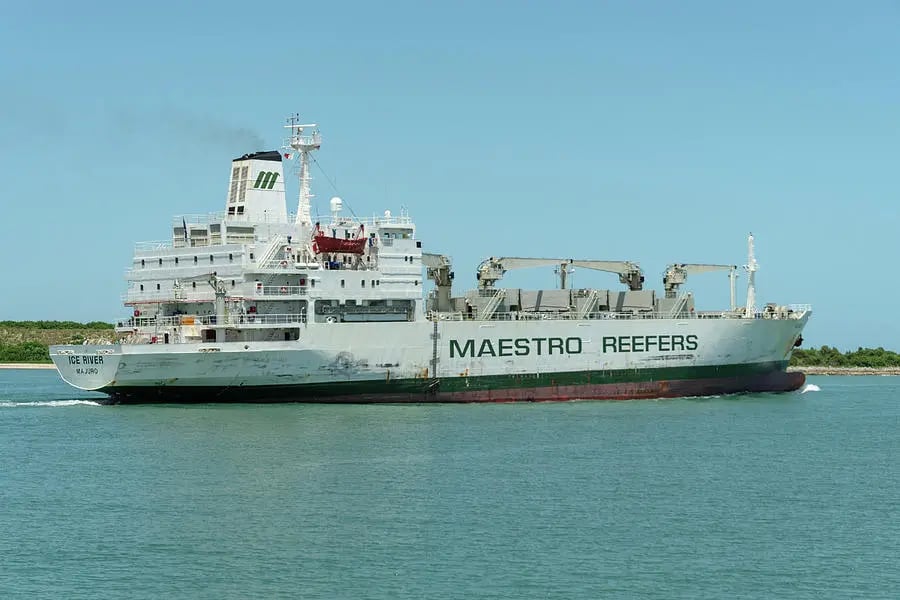
Food items like grains, meat, seafood, dairy products, etc. are transported by these ships.
The reason why reefer ships were invented is that some countries didn’t have the right conditions to produce these goods, while other countries had excess supply.
Thus, with the help of these vessels, this gap could be filled and both countries could benefit.
Best Practices for Cargo Packaging
The ocean's volatility is unpredictable and can impact the goods inside the containers. Thus, you can never overestimate the importance of cargo packaging when you’re shipping internationally through sea freight.
Inappropriate packaging can cause damage to your shipment while loading, unloading, and in transit. That’s why you must ensure that your cargo is adequately packaged and secured.
Also, when you’re using the LCL shipping method, your goods will share the container space with other shippers’ cargo too. So you may want to be extra careful so that your goods don’t get damaged by other cargo and vice versa.
So follow these packaging and loading practices to ensure the safety of your cargo in shared container space:
- Use double-walled boxes for packaging
- If you’re shipping very heavy and dense products, pack them in strong and sturdy wooden boxes
- Utilise the right type of dunnage to secure your goods inside the boxes
- Palletise your cargo so that it’s easy to handle while loading and unloading
- Make sure you apply all the correct labels on your shipments
- Wrap your palletised cargo with appropriate wrapping material to add another layer of protection
- Use the right packaging tools such as tape guns, packaging tapes, bag sealers, etc.
- Spread out goods as much as possible to minimise the height of the pile
- Keep the container weight limits in mind
Ship your Cargo with PACK & SEND
Cargo shipping requires detailed planning and execution so that your goods reach the destination in the right conditions.
Now that you know the types of containers and ships, you’re in a better position to check if your carrier is transporting your cargo appropriately.
And if you want professionals to handle your end-to-end cargo shipping requirements, feel free to contact us. PACK & SEND has decades of experience in international ocean freight shipping and a team of cargo professionals to help you.
We’ll ensure you get the most competitive shipping rates with our premium cargo shipping services while transporting your goods with utmost safety and security.
Frequently Asked Questions (FAQs)
How long are shipping containers?
Shipping containers come in different sizes. Some of the most common container lengths are:
- 8 feet
- 10 feet
- 20 feet
- 40 feet, etc.
However, the height and width of these containers remain the same except for some marginal differences.
How to line a shipping container?
You can line or insulate a shipping container with several materials such as wood lining, cellular glass wool, insulation panels, foam board, etc. You can also use recycled materials like old carpets or fabrics as lining material.
Image Sources: Containertech, Marineinsight, Mobilemodularcontainers, 3docean, Freightquip, Alibaba, Tigershippingcontainers, Seabox, Cargoseatraders, Shipspotting, Vesselfinder, Maritime-executive, Destore, Ics-shipping, Strausscenter, Bradmartinphotos
